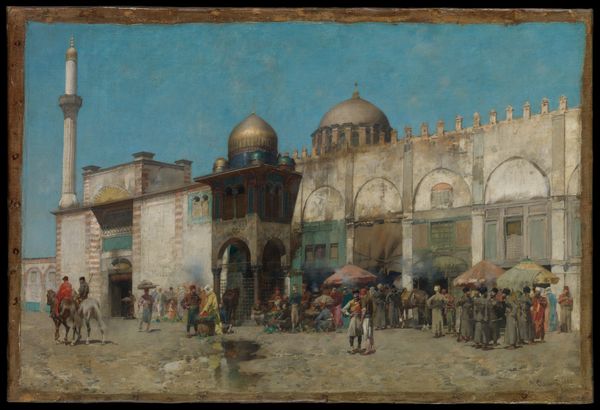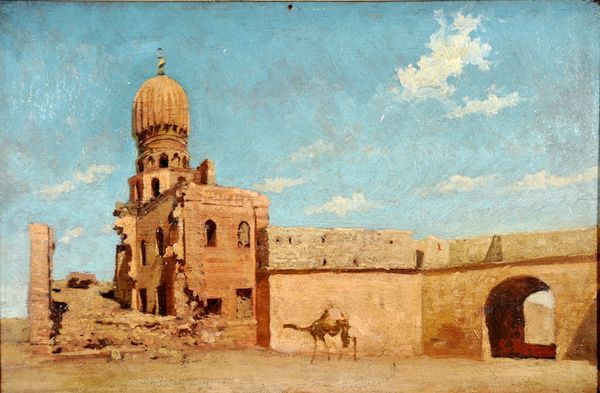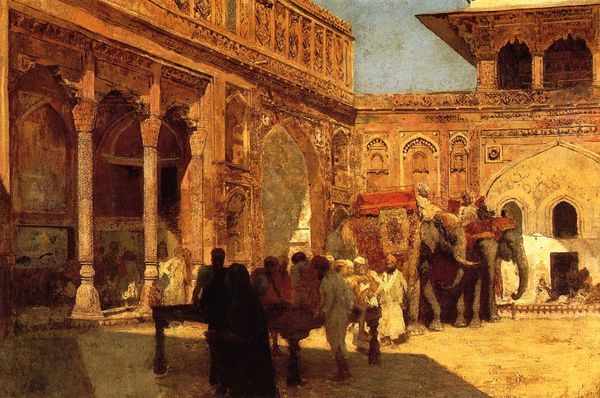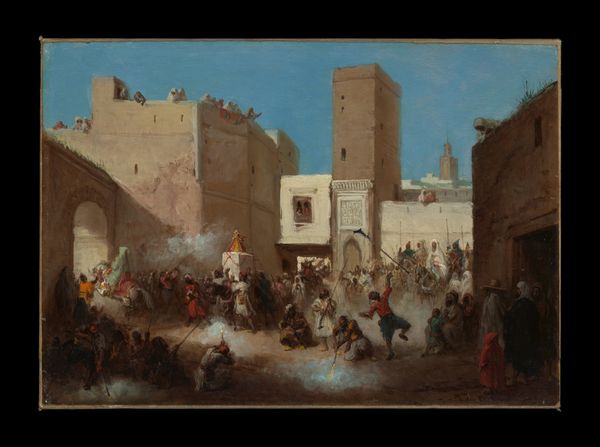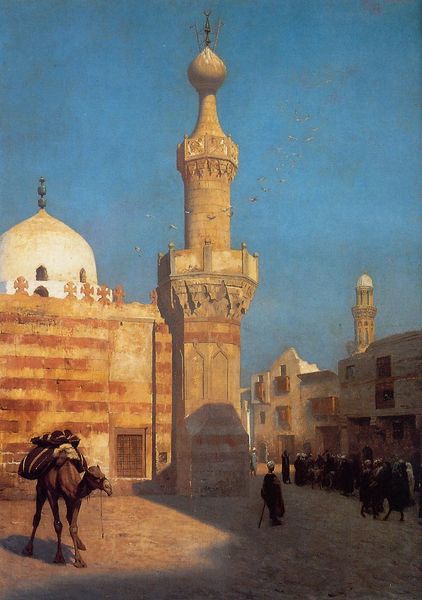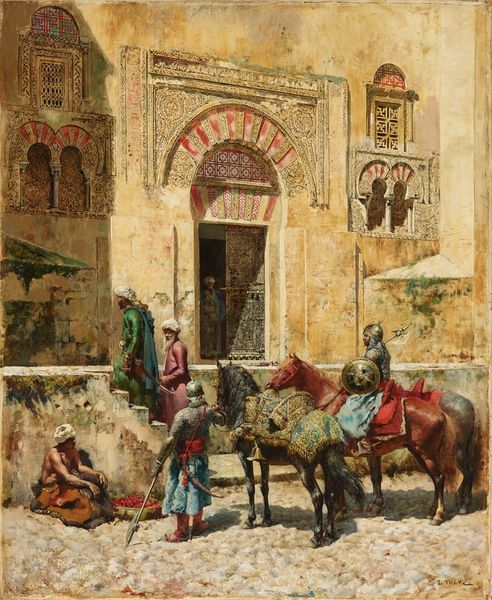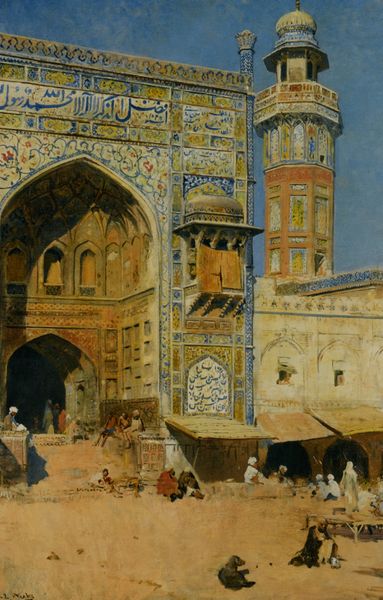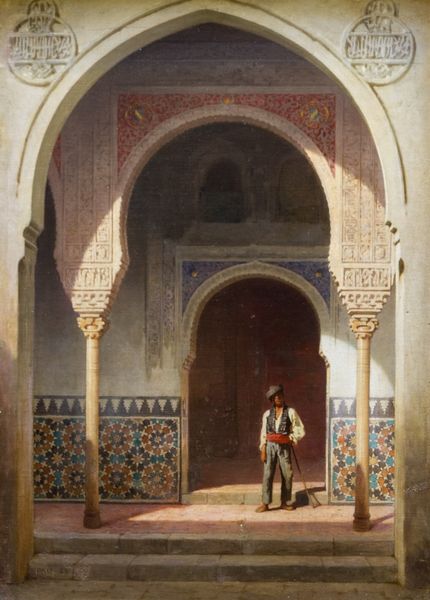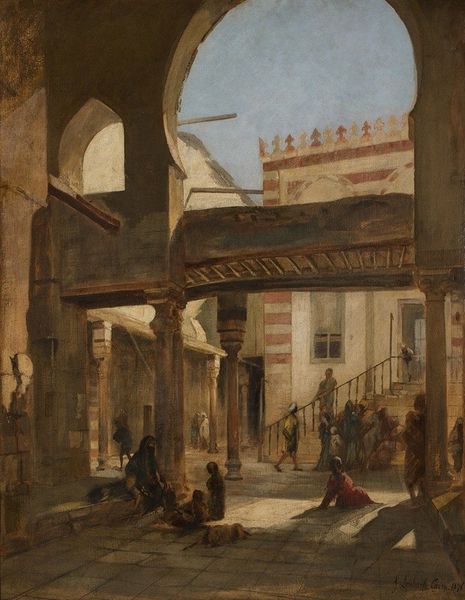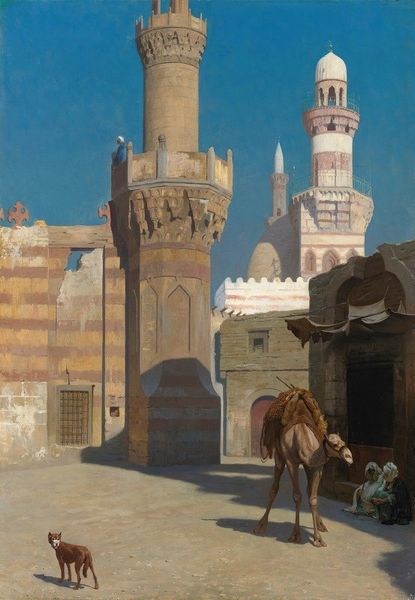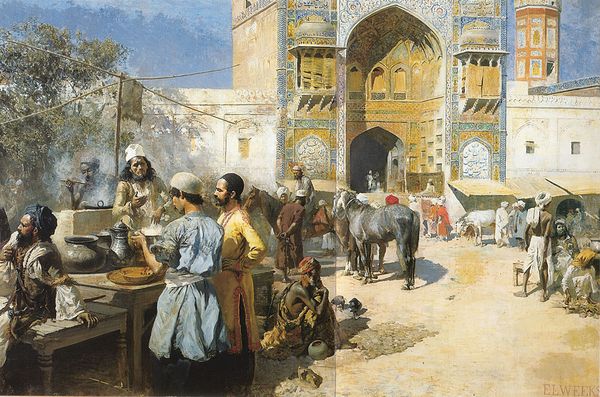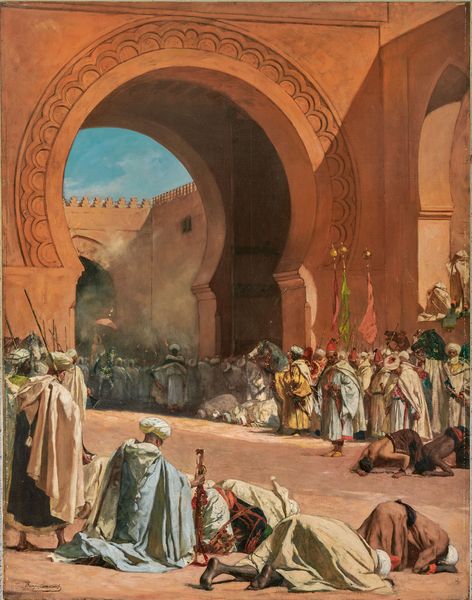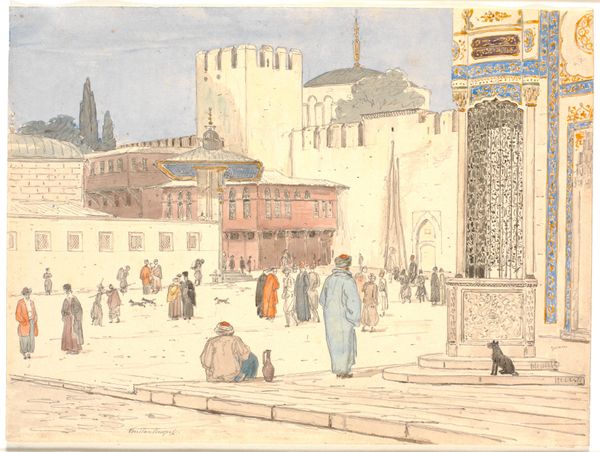
painting, oil-paint
#
painting
#
oil-paint
#
holy-places
#
painted
#
oil painting
#
acrylic on canvas
#
orientalism
#
cityscape
#
islamic-art
#
genre-painting
#
realism
Copyright: Public domain
Curator: Oh, I adore this painting. There’s such a serene yet bustling quality to it. It's an oil painting by Cesare Biseo, titled "Motiv Aus Dem Orient." The light just shimmers! Editor: My first impression is a sort of faded glory. The palette is quite muted, which gives it a nostalgic feel, almost as if looking at a cherished old photograph, but I question its gaze: Who is this painted “Orient” for, and at whose expense? Curator: Right, the “Orient.” But look at the way the artist captures the architecture. That central dome has such a strong presence. I'm drawn into the scene as if I'm physically present there, breathing the very same air. Editor: It’s important to understand how European artists, like Biseo, represented North Africa and the Middle East. “Orientalism” as a genre was steeped in colonial power dynamics. What stories are omitted? Who profits from this visual language? Is it an empathetic approach to cultural representation? Curator: True, and that’s a conversation we should always have, absolutely. But I find beauty in the details: The textures of the walls, the individual faces, how he captures that hazy heat shimmering off the stone. It really sings! Perhaps the point is not whether the stories were omitted or if it served an old empire’s gaze—but to now center the conversations on whose lands the oil paintings depict in order to understand its value and role within its own culture. Editor: Yes, engaging with these images necessitates a critical awareness, especially in considering who is being visually consumed. We are actively analyzing historical power relationships and how that informs modern-day global perspectives and what role it can still hold for marginalized groups that it left behind or were made invisible at that time. It opens up questions, even today. Curator: Indeed! "Motiv Aus Dem Orient," what it says, what it obscures - layers and layers… A picture that stays with you. Editor: Exactly, by engaging critically, we make sure the narratives around these paintings are more complete, recognizing both beauty and complicity, allowing new art practices and perspectives to rise that center voices once shut out.
Comments
No comments
Be the first to comment and join the conversation on the ultimate creative platform.
